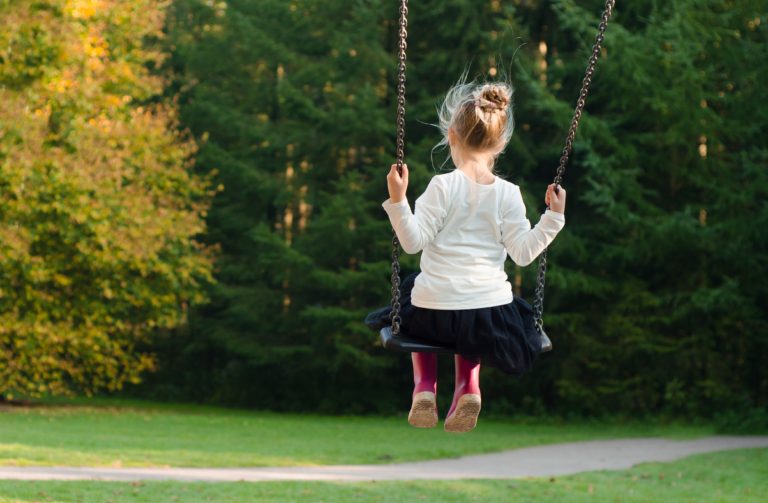Here at ChelomLeavitt.com we enjoy focusing on the many positive elements of sex, including how it can strengthen couple relationships and an individual’s ability to connect to themselves and others. In this post we’re departing from that sex-positive mindset for a moment to cover a topic that far too many are forced to confront: childhood sexual abuse. Childhood sexual abuse (CSA) is a problem of staggering proportions and impact.
Although it is difficult to get accurate numbers of sexual abuse rates due to differing definitions and underreporting, one study estimated that approximately 8% of males and 20% of females worldwide are sexually abused before the age of 18.[i] For the United States, those numbers might be even higher for females, approaching 25%.[ii] Of course, having immense numbers is not needed to rally our attention: it is not okay to have even one child hurt in this way. Abuse can happen to anyone, but by being knowledgeable we can reduce the risk of child sexual abuse.
DEFINITIONS OF CHILD SEXUAL ABUSE
There is not one universal definition of child sexual abuse. However, it can include unwanted or inappropriate touch, sex trafficking, or forced viewing of pornography without touch. Laws often include age differences in their definitions, with similarly-aged children unable to commit the crime of childhood sexual abuse, until the older individual is over 18. The World Health Organization (WHO) defines CSA as “the involvement of a child in sexual activity that he or she does not fully comprehend and is unable to give informed consent to, or for which the child is not developmentally prepared, or else that violate the laws or social taboos of society.”[iii]
PERPETRATORS
Abusers come from all walks of life. It’s important to realize that most abusers, around 85%, are known to the child. Most perpetrators are male (94%).[iv] Many abusers experienced sexual abuse themselves as a child and cite stress as factor in their decision to abuse. However, tending to these facts alone will not help us avoid sexual abusers. Because you can’t tell by looking, be alert to adults your child does not want to be around, including family relatives.
Be as thoughtful as possible about situations where the opportunity for abuse is higher than necessary. For example, many experts have suggested reconsidering sleep overs. Even if you know the family well, you might not know who else might be visiting the friend’s home. Take other precautions such as not allowing children to use public (even church meeting house) restrooms on their own until you believe they are old enough to shout for help if needed. In our family, this meant mom or dad accompanied children into restrooms until children were about eight years old. Be thoughtful about choosing babysitters, and be sensitive to how your children seem to respond to them. Use other commonsense precautions, including your own sense of warning, remembering that although the world is not a perfect place, it is still a good place.
REDUCING RISK
One of the very best ways to reduce the risk of child sexual abuse is to educate children. Teaching children about the positive elements of sexuality is a great safeguard against the potential negative elements. Teaching children that touch should be appropriate and feel good and happy can help them better discern when it does not. Because abuse happens to children of all ages, we need to educate early if possible. Have sexual abuse education be a normal part of the other safety education you give your child, and keep the same tone of voice when you teach them about this risk as other risks—being frank but not frightening. You might tell your child, “One way some people try to hurt children is by touching them underneath their ‘swimsuit area.’ That’s never okay unless we’re at the doctor and Mom or Dad is right there with you, saying it’s okay.”
It is vitally important to explain to a child the manipulative tactics abusers may use to keep the abuse secret. This is a great time to empower your child. Let your child know, “If someone tells you to keep something a secret from Mom and Dad, that’s a sure sign you need to come and tell us. If they tell you that what is happening is your fault, you’ll know they are wrong. We will be so proud of you when you talk to us about it.”
Remember to ask your child open-ended questions about their daily experiences that are fairly specific. Great questions include, “Does anything take place at school that makes you uncomfortable?” and “Does anyone ever touch you where you don’t want to be touched?” and “How do you feel when [so-and-so] talks to you?” and so on. Questions like, “How was your day?” might not be enough of an open door for a child to talk to you.
WHEN TO SEEK HELP
Some signs that may indicate sexual abuse has occurred are:
- inappropriate sexual knowledge given the child’s age
- isolation or poor relationships with peers
- being overly affectionate (promiscuity can be a cry for help)
- depression or anxiety
- changes in hygiene
- poor self-image
- pain or itching in the genital area
- nightmares
- bedwetting or thumb sucking (regressing to these behaviors)
- pulling away from healthy physical contact
- craving attention
- lack of concentration; change in school performance/grades
Remember these are warning signs. There could be other explanations for each of these indicators.
REPORTING ABUSE
All states have mandatory child abuse reporting laws and trained professionals who can evaluate the situation and determine whether help and services are needed. Child Welfare Information Gateway, a service of the Children’s Bureau, Administration for Children and Families, provides a list of Child Abuse and Neglect Reporting Numbers and information on how to make a report in each state. Or call the National Child Abuse Hotline at 800-4-A-CHILD, any time 24/7.
GENERAL CONSIDERATIONS
Hold regular, upbeat safety discussions with your children, and have sexual abuse be a normal part of that conversation. Be specific about what you are asking and teaching them. Using correct terms for body parts and easy to understand terms for younger children like “swimsuit area” can be useful. Sometimes children don’t have the ability to put their experiences into words, and if you label it for them, they can more easily approach you for help. Having frequent one-on-one time with your child will create the opportunity for them to open up to you. And remember that although we would prefer never to have to confront child sexual abuse, parents are uniquely positioned to help reduce the risk of child sexual abuse and to empower a child to overcome anything they might have endured.
[i] Singh, M. M., Parsekar, S. S., & Nair, S. N. (2014). An epidemiological overview of child sexual abuse. Journal of Family Medicine and Primary Care, 3, 430–435.
[ii] Wihbey, J. (2011). Global prevalence of child sexual abuse. Journalist Resource. Available from: Journalistsresource.org/studies/./global-prevalence-child-sexual-abuse
[iii] World Health organization (2014). Child maltreatment. Available from: http://www.who.int/topics/child_abuse/en/
[iv] Bourke, A., Doherty, S., McBride, O., Morgan, K., & McGee, H. (2014). Female perpetrators of child sexual abuse: characteristics of the offender and victim. Psychology, Crime & Law, 20, 769–780.

Rebecca Clarke
Rebecca W. Clarke is a PhD student at Brigham Young University studying with Dr. Chelom Leavitt. Her research focus is religion and sexuality, and she is currently working on papers dealing with sexual sanctification, sexual flourishing, and religiosity. Rebecca has been married to Sam Clarke for 24 years and they have four children.


